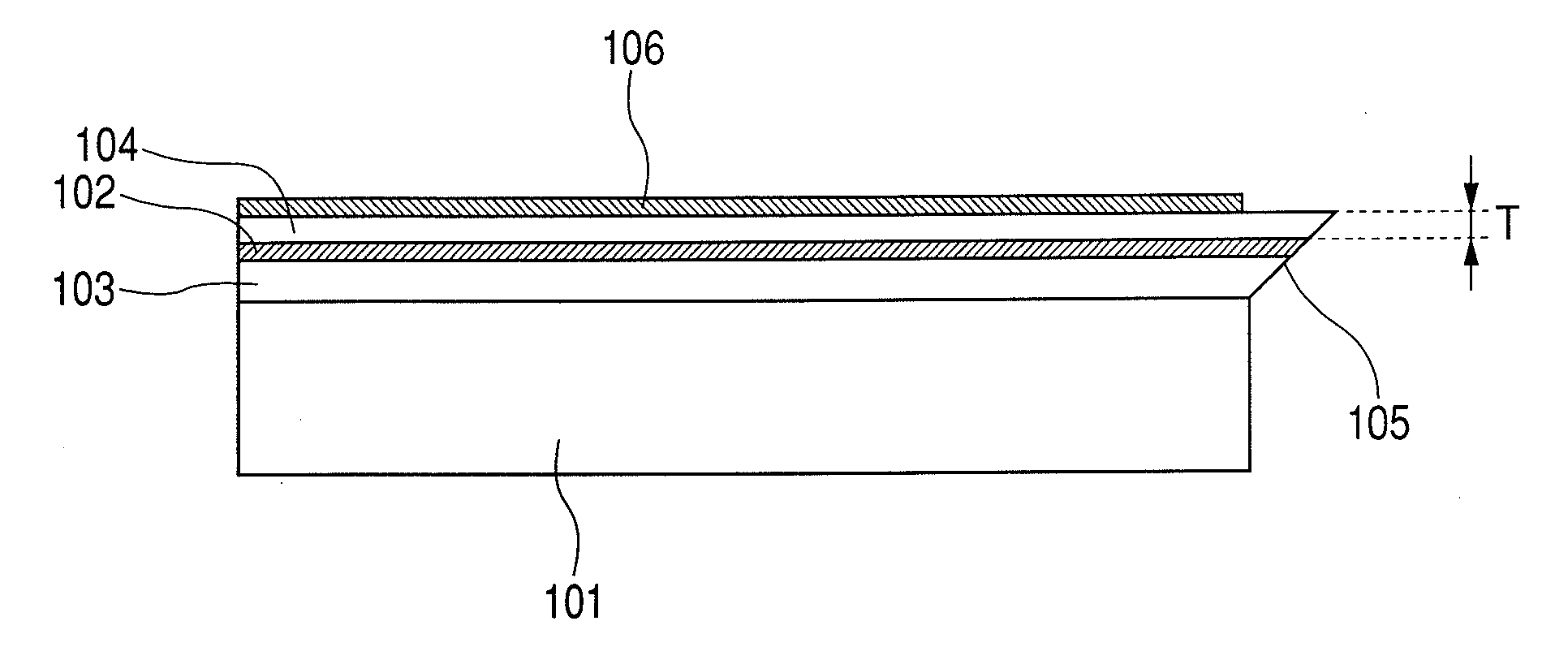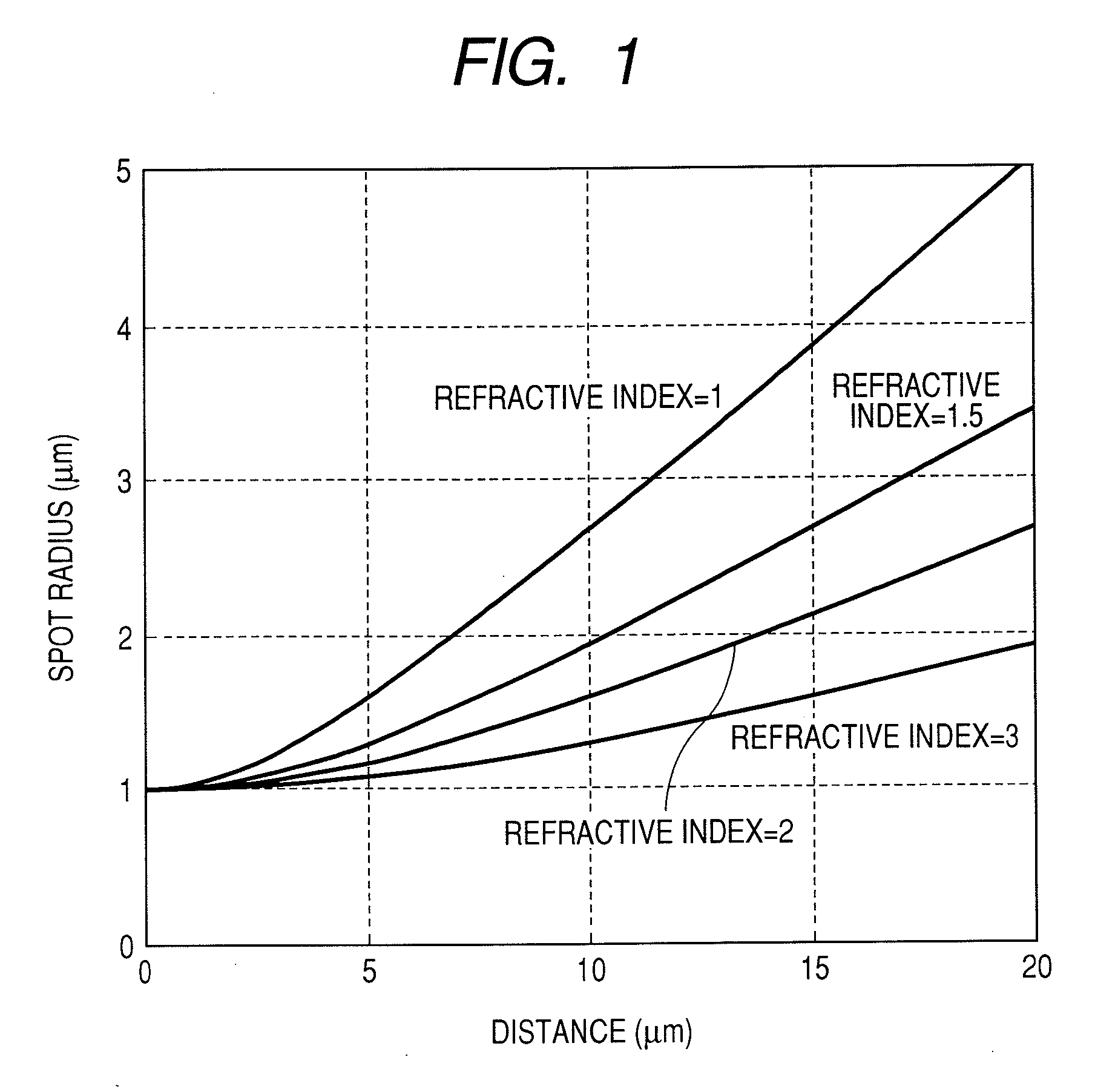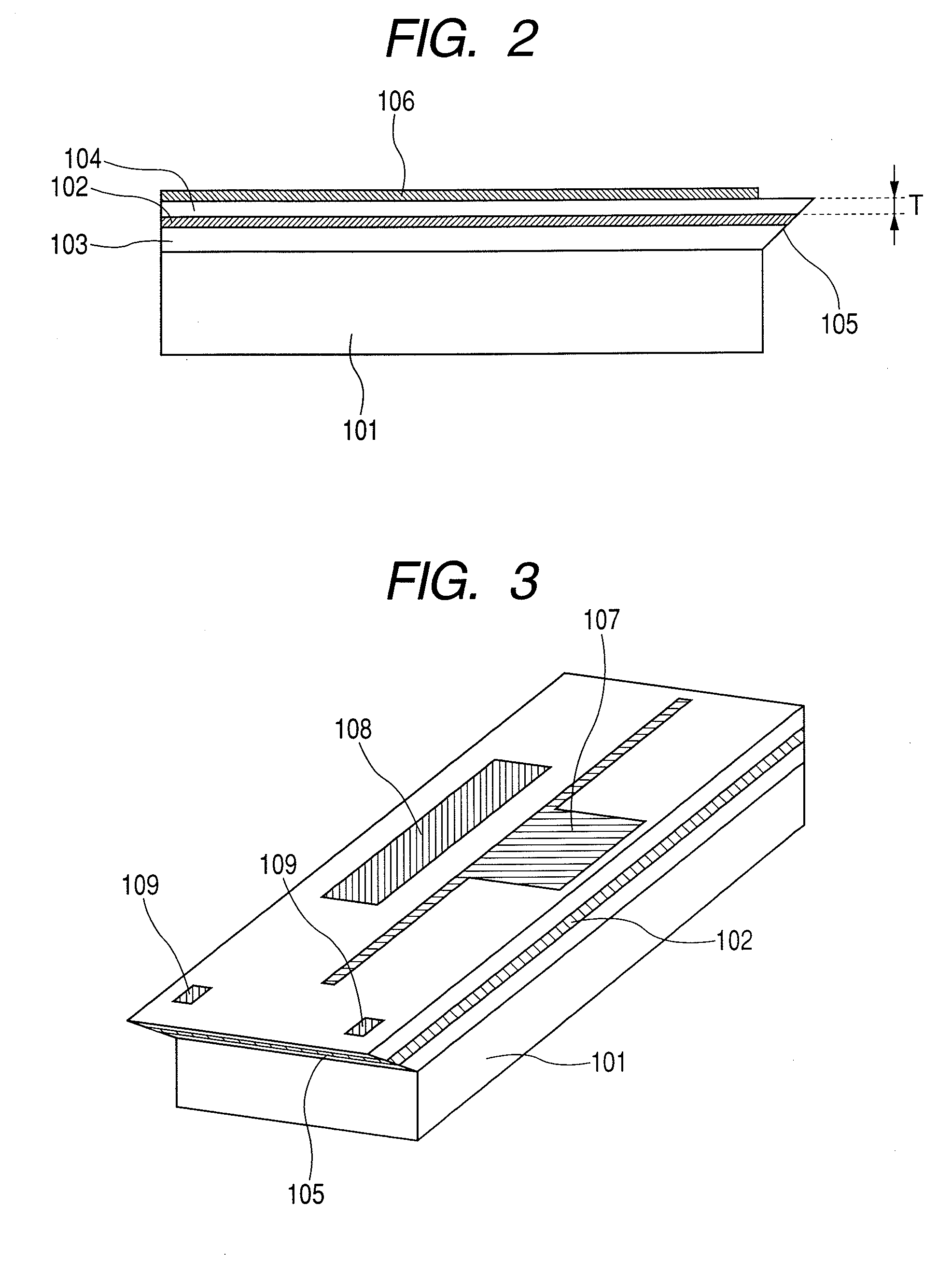Recording head
a head and recording technology, applied in the field of recording heads, can solve the problems of reducing coupling loss, increasing the number of optical components and beam loss, and complicated mounting of the optical system of the optical components
- Summary
- Abstract
- Description
- Claims
- Application Information
AI Technical Summary
Benefits of technology
Problems solved by technology
Method used
Image
Examples
first embodiment
[0066]FIG. 6 is a cross-sectional drawing along the direction of the cavity of an LD element in a recording head on which a semiconductor LD element is mounted, where a reflector of the embodiment in this invention is monolithically integrated. FIG. 7 is a perspective drawing illustrating the same structure. The LD element monolithically integrates the reflector 105 and emits beam from the face of a side opposite the substrate 101. The aforementioned LD element includes the active layer 102 in a direction parallel to the upper face of the slider 111, and the surface of the side closer to the active layer 102, that is, the face of the side opposite the substrate 101 approaches the upper face of the slider 111 and is mounted. The optical emission position of the LD element is mounted to adjust to the optical injection position of the optical waveguide 113 formed in the slider. Solder 112 is placed over the upper face of the slider and mounted to be welded to the electrode 106 of the L...
second embodiment
[0068]FIG. 9 is a cross-sectional drawing along the direction of the cavity of an LD element in a recording head on which a semiconductor LD element is mounted where a reflector of the embodiment in this invention is monolithically integrated. FIG. 10 is a perspective drawing illustrating the same structure. It is an example in which the face for mounting an LD element is made lower by the same amount as the height corresponding to the thickness of the adhesive used for mounting.
[0069]When the LD element is mounted over the slider, a solder is used for a conductive adhesive. Since solder usually has a thickness of several microns, a gap is created by the same amount corresponding to the thickness of the solder between the optical emission position of the LD element and the injection position of the optical waveguide over the slider. In order to improve the optical coupling efficiency by compensating for the amount corresponding to the thickness, the part for mounting the LD element ...
third embodiment
[0070]FIG. 11 is a cross-sectional drawing along the direction of the cavity of an LD element in a recording head on which a semiconductor LD element is mounted where a reflector of the embodiment in this invention is monolithically integrated. FIG. 12 is a perspective drawing illustrating the same structure. It is a structure where a submount 121 is sandwiched between the LD element and the slider, and active alignment can be applied by adopting this structure. An adhesive 122 is used for the joint between the submount 121 and the slider 111. A metallic solder and a chemical adhesion system resin can be used for the adhesive 122.
[0071]FIG. 13 is a schematic drawing illustrating a state where the LD element and the submount are mounted over the slider. At first, the LD element where the reflector is integrated is mounted over the submount 121. Lead lines 116 and 117 for the LD drive power supply are provided over the submount and the p-electrode and n-electrode are connected to each...
PUM
| Property | Measurement | Unit |
|---|---|---|
| wavelength range | aaaaa | aaaaa |
| wavelength range | aaaaa | aaaaa |
| size | aaaaa | aaaaa |
Abstract
Description
Claims
Application Information
 Login to View More
Login to View More - R&D
- Intellectual Property
- Life Sciences
- Materials
- Tech Scout
- Unparalleled Data Quality
- Higher Quality Content
- 60% Fewer Hallucinations
Browse by: Latest US Patents, China's latest patents, Technical Efficacy Thesaurus, Application Domain, Technology Topic, Popular Technical Reports.
© 2025 PatSnap. All rights reserved.Legal|Privacy policy|Modern Slavery Act Transparency Statement|Sitemap|About US| Contact US: help@patsnap.com



